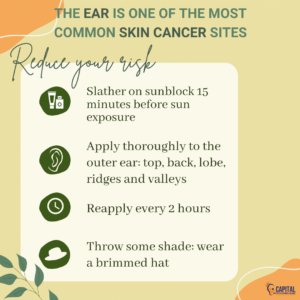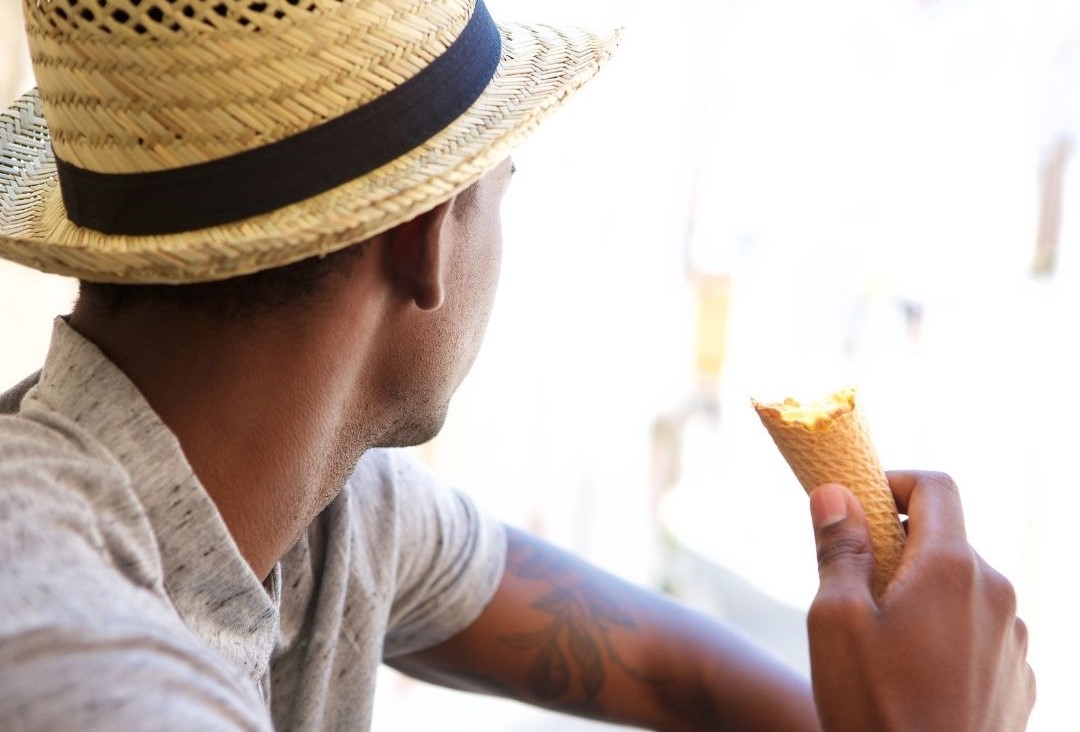While you’re planning your trips, travels, and time off this summer, consider these quick tips to care for your ears and hearing:
Show some love to the skin you’re in, especially your ears.

Protect your hearing
‘Tis the season for lawn equipment, power tools, fireworks, and music festivals. Ringing in the ears, muffled hearing, and ear pain are signs that you have been exposed to damaging sounds. Prevent these symptoms and permanent harm to your hearing by limiting your exposure to loud sounds. Earmuff hearing protectors are great solutions while doing lawn and woodwork. The further away you are from speakers at outdoor concerts and fireworks, the less likely you will need hearing protection. If you are close to either, slip a pair of earplugs in your ears to keep your hearing safe. Foam earplugs are versatile enough for any noisy situation. Music lovers might appreciate musician’s earplugs at concerts, which preserve sound quality while reducing sound intensity. See your audiologist for advice on hearing protection that works best for you.
Find a spot with good lighting for your conversations
Whether or not they have hearing loss, everyone understands speech better when viewing the speaker’s face. Professionals refer to facial expressions and the movement of the lips, teeth, and tongue as visual cues. Have you ever noticed it is easier to understand a person who is not wearing a mask than one who is? In that case, you already know the importance of visual cues. Want a conversation while you soak up the sun? Wear sunglasses or a brimmed hat to prevent squinting and give you the best view of a talker’s face. After dusk, if you’re at an evening outdoor party, look for a well-lit place to chat and take advantage of those visual cues.
Don’t let background noise impede your communication
Are you planning quality time on the beach? The sounds of wind and waves can be relaxing. They can also drown out your loved ones’ voices. You may need to move closer to the person you are conversing with to understand them better. Use visual cues to fill in words you don’t hear well. Ask clarifying questions if you don’t know what was said. If you own a remote microphone or FM system, put that thing to use. It will transmit your partner’s voice loud and clear above the noise. Wind rushing over hearing aid microphones can create noisy turbulence. The noise suppression programs in your hearing aid may not be enough to combat a stiff wind. Try wearing a sun hat or finding shelter from the wind to converse in peace.
Can your hearing aid take summer’s heat, sand, and surf?
Most hearing aids can withstand temperatures of up to 140℉ before they sustain permanent damage. However, engineers design hearing aids to operate best at much cooler temperatures—below 104℉. Many manufacturers offer hearing aids designed to keep out dust, dirt, and sand, which is good news for beach lovers. Water-resistant and waterproof hearing aids are common but don’t plan on swimming while wearing your hearing aids. Talk with your audiologist about the specifications of your particular device to ensure it can keep up with you and your summer activities.


